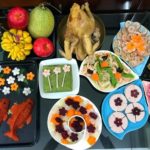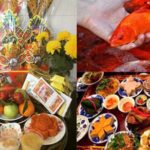According to folk beliefs, the Kitchen Gods, or Ong Cong and Ong Tao, are worshipped on the 23rd of the twelfth lunar month every year. This is the day when the Kitchen Gods return to heaven and report on the family’s well-being and activities throughout the year.
For reference: What is Tet Holiday 2024 all about?
1 The Tradition of Worshipping the Kitchen Gods in 2024
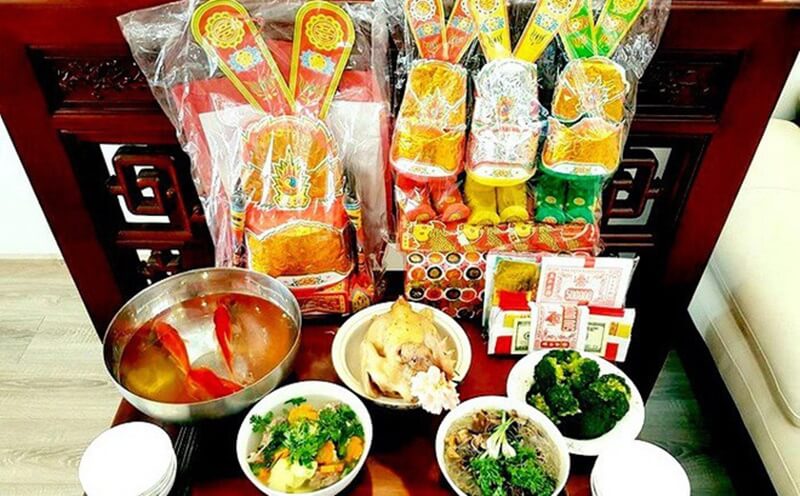 Tradition of Worshipping the Kitchen Gods
Tradition of Worshipping the Kitchen Gods
The 23rd of the twelfth lunar month marks the first day of a series of festive activities leading up to the bustling Tet Holiday until the 15th of the first lunar month. After worshipping the Kitchen Gods, families will clean and decorate their homes in preparation for Tet.
According to ancient beliefs, the well-being and health of the family depend on the kitchen, as it is the heart of the home. The Kitchen Gods are always present in the kitchen and are believed to know most of the family’s affairs. When they return to heaven, they will report to the Jade Emperor, so everyone wants them to speak favorably about the family’s deeds, ensuring blessings and avoiding reprimand.
For further reading:
2 Where to Place the Offering for the Kitchen Gods?
Placing the Offering in the Kitchen
The offerings for the Kitchen Gods may vary depending on regional customs and beliefs.
The offerings are usually abundant and colorful, symbolizing a prosperous year. As the Kitchen Gods are associated with the hearth, Dr. Nguyen Hoang Diep suggests that “the altar for the Kitchen Gods can be placed in the kitchen, either next to or above the stove, reflecting the folk belief in worshipping the god who oversees the kitchen and wishes to keep the hearth warm, bringing harmony and prosperity to the family.”
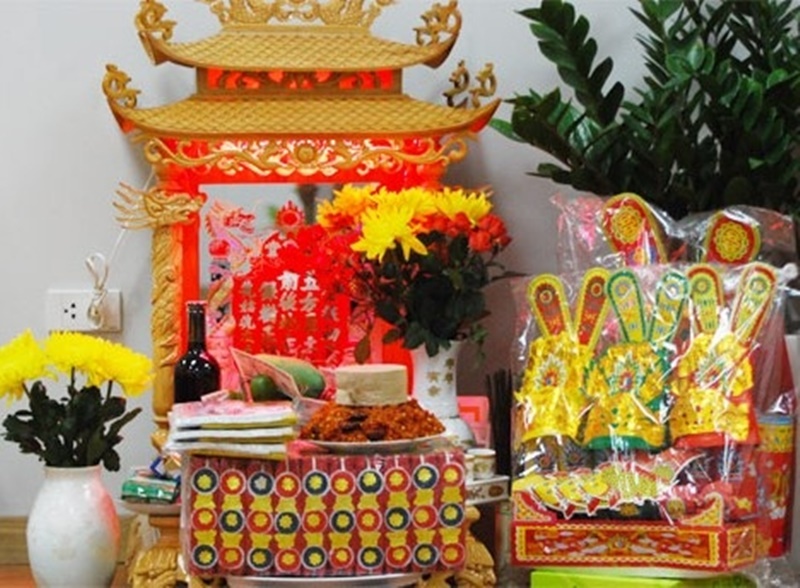 Placing the Offering in the Kitchen
Placing the Offering in the Kitchen
However, since the kitchen is primarily a food preparation area and may not be as solemn as the ancestral altar, it is recommended to place the offerings on the altar for the Kitchen Gods or the ancestral altar.
Placing the Offering on the Ancestral Altar
The kitchen altar is considered the abode of the Kitchen Gods. Regarding the placement of offerings, feng shui experts Pham Cuong and Mai Van Sinh advise that “during the worship of the Kitchen Gods, if your home has a separate altar for them, offer incense there. If not, offer incense at the ancestral altar or the altar of the deities, as altars have always been considered the antennae for communication between the living and the divine.”
For further exploration:
3 What to Prepare for the Offering?
Simplicity is often valued in offerings, and the same goes for the Kitchen Gods. The offerings can be either vegetarian (including betel and areca nuts, flowers, fruits, gold and silver papers, etc.) or non-vegetarian (such as sticky rice, boiled chicken, boiled pork leg, mushroom dishes, bamboo shoots, etc.). Traditionally, the offering included a dish of rice, a dish of salt, 500 grams of boiled pork shoulder, a bowl of mushroom and pork ball soup, a dish of stir-fried mixed vegetables, a dish of steamed ground pork, a dish of red sticky rice, a dish of sweet soup, a dish of fruits, a pot of lotus tea, three cups of wine, a pomelo, betel and areca nuts, a small pot of peach blossoms, a small pot of chrysanthemums, a pack of gold and silver papers, and joss sticks.
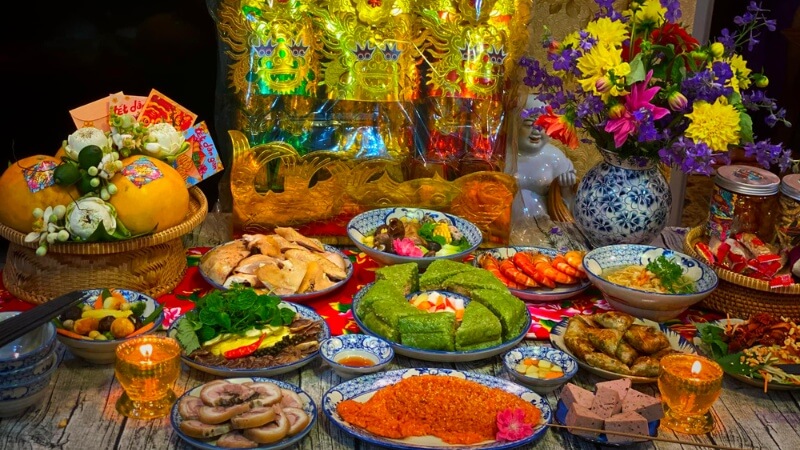 Offering for the Kitchen Gods
Offering for the Kitchen Gods
I hope this article has provided you with useful information regarding the offerings and their placement. Wishing you a joyful Tet Holiday!
The Ultimate Guide to the 2024 Ritual of Worshipping the Kitchen Gods
The annual [Send-off Ceremony for the Kitchen Gods] is a revered tradition in Vietnamese culture. While the ceremony need not be extravagant, it demands solemnity and thoughtful preparation to honor the Gods and showcase the family’s sincerity. It is essential to understand the requirements for the ceremony and the appropriate timing to ensure a respectful and meaningful send-off.


























